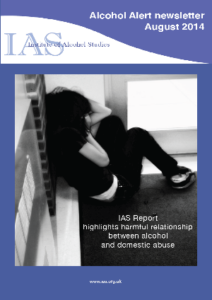In this month’s alert
Editorial – September 2014
Welcome to the September edition of Alcohol Alert, the Institute of Alcohol Studies newsletter, covering the latest updates on UK alcohol policy matters. In this issue, Jennifer Holly (Against Violence & Abuse) and Professor Jonathan Shepherd (Violence Research Group, Cardiff University) give their thoughts on a new report which highlights the harmful relationship between alcohol and domestic abuse. Other articles include: cross-party political support for a manifesto to tackle alcohol misuse; the release of a report backing the Welsh Government’s plans to introduce minimum unit pricing; newly published data on underage drinking; and plans to tighten up alcohol licensing laws in Northern Ireland.
Please click on the article titles to read them. We hope you enjoy this edition.
IAS report highlights harmful relationship between alcohol and domestic abuse
Raising the price of alcohol and improved training for law enforcement agencies will help tackle domestic abuse, claims a report published by the Institute of Alcohol Studies (IAS) this month.
A review of the latest available research found a strong association between alcohol misuse and domestic abuse, particularly with incidents of physical domestic violence and sexual assault. Key findings include:
- Research typically finds that between 25% and 50% of those who perpetrate domestic abuse have been drinking at the time of assault, although in some studies the figure is as high as 73%. Cases involving severe violence are twice as likely as others to include alcohol
- Where alcohol is involved in domestic abuse it is not the root cause, but rather a compounding factor. Alcohol should not be used as an excuse for those who perpetrate abuse, but neither should its influence be ignored
- Alcohol use by the victims of domestic abuse is a complicated issue. At times it can be misinterpreted and used against the victim, yet in some scenarios victims are likely to turn to alcohol as a means of coping with their experiences of abuse
- Research suggests that those who mix energy drinks and alcohol are almost twice as likely to be taken advantage of sexually
- There is a strong link between alcohol and violence, and research suggests that pricing policies such as minimum unit pricing for alcohol would reduce rates of domestic violence
- In light of poor conviction rates and general misunderstanding about alcohol sexual assault and rape, there have been calls for a change in the law around consent so that intoxication is seen as a possible indicator that abuse has taken place
- There is a need for improved training for law enforcement agencies on the impact of alcohol, sexual assault and the capacity to consent
 Rape poster row
Rape poster row
Recently, the question of consent in cases where the victim was under the influence of alcohol was at the centre of a row over an NHS and Home Office poster (see right) which warned that “one in three rapes happens when the victim has been drinking”.
Critics complained that the poster was “a blatant and appalling case of victim blaming by our own Government, putting the onus on the victim rather than the perpetrator”, and a petition calling for it to be destroyed has so far gathered over 100,000 signatures.
The poster first appeared in 2006 as part of the Home Office’s ‘Know Your Limits’ campaign under the then Labour Government, which was discontinued under the Coalition Government. However, eight years on, the image files remain archived on an old web domain and hard copies may still be on display in some NHS premises.
Drunk does not mean yes
A current awareness campaign being held in the Isle of Wight, designed to improve knowledge around consent and rape and to expose rape ‘myths’, confronts the issue of drunkenness directly with a poster (see below left) that offers a different emphasis to that of the Know Your Limits campaign. The tag line of the poster is “Drunk does not mean yes“.
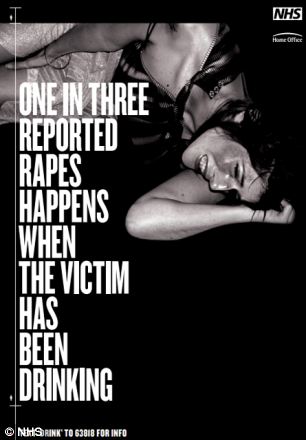 Speaking to Alcohol Alert, campaign co-ordinator Fleur Gardiner explained:
Speaking to Alcohol Alert, campaign co-ordinator Fleur Gardiner explained:
“Our campaign seeks to challenge commonly held beliefs about rape, myths that allow victims to be criticised for sending out the ‘wrong message’, whilst excusing perpetrators for being ‘led on’.
“Alcohol is often involved in cases of rape, and is one of the most commonly cited factors when attempting to blame victims and excuse perpetrators. This makes it incredibly hard for victims to seek help – as they fear being judged or blamed. We know from research that a substantial proportion of people believe that a woman was fully or partially responsible for being raped if she was drunk. This has not been helped by well meaning, but dangerous messages from alcohol awareness campaigns that link rape to the victim’s alcohol intake and advise women to avoid drinking to keep safe. Messages like these are not helpful and ignore the fact that the vast majority of rapes are not committed by strangers but by people known to the victim – most often partners or friends.
“Rape myths have to be challenged if we are to see an increase in convictions for rape. This campaign aims to make it clear that the only person responsible for rape is the rapist.”
The IAS report concludes that in light of such misinformation about the nature of sexual consent, there is a need for improved training among law enforcement agencies in order to create an environment where the testimony of victims of alcohol-related sexual assault and rape is given greater weight.
The charity Against Violence and Abuse (AVA) has called for such training to be reinforced further by the extension of the Crown Prosecution Service Guidelines on Prosecuting Child Sexual Abuse Cases (2013) to adults. This would reinforce the recognition that if “the victim has been, or is, abusing drink or drugs” or their account they give is “inconsistent”, this should be understood as a possible indicator that abuse has taken place rather than undermining the victim’s credibility.
The report ‘Alcohol, Domestic Abuse and Sexual Assault’ is available to read/download from the IAS website. If you want to know more about alcohol-related domestic abuse, you can listen to Professor Jonathan Shepherd (Director, Violence Research Group, Cardiff University) and Jennifer Holly (AVA Stella Project Coordinator) by following the Soundcloud link.
Parliamentarians call on all political parties to commit to tackling alcohol harms
The All Party Parliamentary Group (APPG) on Alcohol Misuse has issued a manifesto calling on political parties effectively to minimise alcohol-related harm in the UK by committing to ten measures
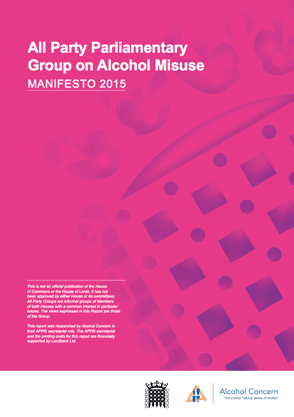 The ten measures include calling for the strengthening of alcohol advertising regulations and a phased ban on alcohol sponsorship, an increase in funding for treatment and access
The ten measures include calling for the strengthening of alcohol advertising regulations and a phased ban on alcohol sponsorship, an increase in funding for treatment and access
levels for problem drinkers, and the introduction of minimum unit pricing. There are also calls to make the training of parental substance abuse mandatory for all social workers and healthcare professionals, and for national public awareness and behaviour change campaigns on alcohol to be independently funded.
Tracey Crouch MP, Chair of the All Party Parliamentary Group on Alcohol Misuse, said: “Due to alcohol, one person is killed every hour and 1.2 million people are admitted to hospital a year. Getting political parties to seriously commit to these 10 measures will be a massive step in tackling the huge public health issue that alcohol is.”
Lord Brooke of Alverthorpe, Vice-Chair of the All Party Parliamentary Group on Alcohol Misuse, said: “After smoking, alcohol is the second biggest preventable killer. Not
only does it cost lives but burdens the NHS and the Criminal and Justice systems and others with ever increasing costs.
“All the political parties know that but they run for cover when they are confronted by the drinks industry and its immensely powerful lobby.
“These proposals give them another chance to consider whether they really have the guts to take a different line for the country’s wellbeing in the future.”
The report says 300,000 people in England are addicted to opiates or crack, 1.6 million are dependent on alcohol and one in seven children under the age of one live with a substance-abusing
parent. Every year drugs cost society around £15 billion and alcohol £21 billion. Yet residential treatment – which the Centre for Social Justice CSJ says is the most effective form of abstinence-based treatment – has been continually cut and it calls for this trend to be reversed. It also claims that the treatment sector is mainly concerned with ‘managing’ addicts
rather than promoting abstinence from drugs and alcohol, and it wants this to change.”
Penny per unit to fund treatment services
As the APPG was issuing its manifesto, the Centre for Social Justice (CSJ), a think-tank closely linked to the Coalition government, came out with its own recommendations. These included a ‘treatment tax’ to be added to the cost of alcohol from off-licences to fund a new generation of rehabilitation centres.
This and the other measures it advocates were necessary, the CSJ says, to stem the tide of Britain’s addiction problem, which is not currently being adequately addressed. The CSJ says the NHS, Public Health England and local authorities risk giving up on many addicts and it proposes a blueprint for tackling what it says are shocking levels of substance abuse.
Despite small reductions in the number of people using heroin and those drinking every week, the CSJ says the costs of addiction are rising, with alcohol-related admissions to hospital doubling in a decade.
“Addiction rips into families, makes communities less safe and entrenches poverty,” said CSJ Director, Christian Guy.
For years full recovery has been the preserve of the wealthy – closed off to the poorest people and to those with problems who need to rely on a public system. We want to break this injustice wide open.”
Special tax on alcohol
The CSJ wants a ‘treatment tax’ to be levied on off-licence alcohol sales to fund rehabilitation for people with alcohol and drug addictions. Under the scheme, a levy of a penny per unit would be added by the end of the next Parliament to fund recovery services, to the tune of £1.1billion over the five years.
It would be spent solely on setting up a network of abstinence-based rehabilitation centres and funding sessions within them. Official records, the CSJ says, show that the best residential centres in the country get more than 50% of patients free from their addiction problems.
The Ambitious for Recovery report, part of the CSJ’s Breakthrough Britain 2015 series, also says addiction and worklessness are closely linked – for example dependent drinkers are twice as likely to claim benefits.
The CSJ welcomes Jobcentre Plus schemes that are currently running and helping people address addiction problems that are stopping them from working.
Researchers say that, once more rehab centres are created, the Government should look at reducing welfare payments for claimants who continually refuse to address their addiction.
To help protect addicts’ families, the CSJ also recommends the piloting of a ‘welfare card’ where a proportion of benefits would have to be spent on essentials like food, clothing and travel. This would apply to alcohol or drug addicts with dependent children who refuse treatment and who have not been in work for a year.
Alcohol advertisement banned
ASA upholds complaint against Captain Morgan rum “war on boredom” ad
Alcohol Concern’s Youth Alcohol Advertising Council (YAAC) have succeeded in having banned a picture which appeared on the Facebook page of Captain Morgan rum, owned by Diageo Ltd. The page showed the pirate Captain Morgan raising a glass and cheering whilst surrounded by his crew. The text at top of the image stated “WEDNESDAY. I’M DECLARING WAR ON MID-WEEK BOREDOM”.
The Youth Alcohol Advertising Council is a group of young people from across England and Wales who review alcohol advertising against key principles of the rules that regulate content, the Advertising Standards Code. It makes complaints to the UK’s advertising regulator, the Advertising Standards Authority (ASA), when it feels the codes have been breached.Its first success was a complaint against the advertising of Frosty Jack’s cider which it claimed was deliberately designed to appeal to children and young people under 18 and was upheld by the ASA Council.
In the Captain Morgan case, the YAAC complaint, the only one received, was that the advertisement was irresponsible, because it implied that alcohol could overcome boredom and was capable of changing mood.
In response, Diageo Great Britain Ltd stated that the rationale behind the ad was to call consumers to take a break from their normal weekday routine and spend time with friends mid-week rather than wait for the weekend. They said the ad was not a call to drink as there was no mention of alcohol consumption, and the ad did not feature the product or servings of alcohol prominently. The central image was the Captain surrounded by, and enjoying time spent with, his crewmates. They acknowledged that the Captain and crew had raised their glasses in celebration, but said that was a peripheral part of the image. They also highlighted that the ad was written in the same tone as a series of other regular posts on the Captain Morgan Facebook page which also promoted meeting with friends or the Wednesday mid-week milestone, including one that stated “Gather your crew” and another which stated “Navigate through hump day and set your sights on the weekend!”In that context, they said consumers viewing the ad would understand that the Captain and crew were celebrating the end of mid-week boredom, achieved through coming together, and not that alcohol consumption was the means to that end.
Diageo also highlighted that the ad was one of a series of posts during the course of the week, which included two responsible drinking posts.
Facebook stated that the ad did not violate any of their internal policies and was appropriately age-gated. They had not received any complaints directly. They also said that, under their Terms, administrators were required to ensure their pages complied with all applicable laws, statutes and regulations.
Complaint Upheld
However, the complaint was upheld by the ASA. The ASA noted that the ad showed the Captain, who was cheering and leading a toast, surrounded by his crewmates, who were also raising their glasses. It considered that most consumers, viewing the image and text together, particularly in the context of the Captain Morgan Facebook page, would interpret the ad to mean that the Captain was alleviating his boredom by drinking Captain Morgan with friends. The ASA also considered that the presence of “drink responsibly” posts did not undermine the fact that the ad, although not expressly encouraging excessive drinking, implied that the Captain had sought alcohol to improve his mood. Because of that, it concluded that the ad implied that alcohol could overcome boredom and was capable of changing mood, and was therefore in breach of the Code.
Northern Ireland to tighten up alcohol licensing laws
Liquor licensing reform proposals see Northern Ireland move away from 2003 Act
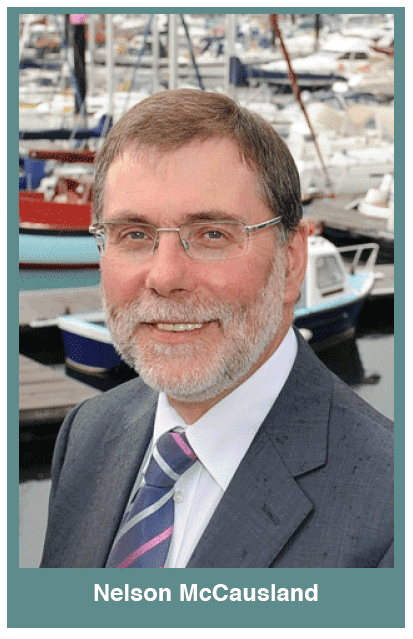 Proposed changes to the regulation of the sale and supply of alcohol were presented to the Northern Ireland Assembly on 22 July 2014 by the Minister for Social Development.
Proposed changes to the regulation of the sale and supply of alcohol were presented to the Northern Ireland Assembly on 22 July 2014 by the Minister for Social Development.
Nelson McCausland‘s paper, which outlines a series of intended reforms to the country’s liquor laws, follows a report published in December 2013 on the outcome of a four-month consultation attracting over 2,500 responses from a wide range of stakeholders including the drinks industry, health bodies and the general public.
The document states that the purpose of the new bill is to “achieve a balanced approach” to alcohol licensing legislation by including both “measures aimed at tackling ongoing political and community concern surrounding excessive alcohol consumption and related harm in Northern Ireland” and support [for] the hospitality and tourism industries.
A key feature of the Bill is the restriction on the advertising of alcohol in supermarkets and other off-sales premises, which involves prohibiting the advertising of alcohol within the vicinity of the premises and restricting advertising materials relating primarily to alcohol products to the licensed area of supermarkets.
The Bill also brings forward plans to prevent easy access to alcohol for underage drinkers by requiring supermarkets and off-licence vendors to request age identification for home deliveries of alcohol, and by banning self-dispensing methods of supply, via Pour Your Own Pint tables and vending machines.
Under the new legislation, consumers would not be permitted to remove alcohol from on-licensed premises after closing time, in an effort to address concerns that the availability of alcohol at late hours may “encourage excessive consumption and lead to anti-social behaviour”.
If implemented, the proposed regulatory tightening of the sale and supply of alcohol would distance Northern Ireland from the more relaxed Licensing Act (2003) laws currently in place in England & Wales. A notable example of this is the amendment, which aims to cement statutory approval for self-regulation by granting the Department for Social Development the power to take offending licence holders to court over breaches of voluntary industry-led codes of practice over the sale and promotion of alcohol.
But the document also strives to “recognise the importance of the hospitality and tourism sectors to the local economy,” and in doing so, sets out proposals allowing licensed premises to apply for permission to extend hours selling alcohol to 2am on a limited number of occasions (12) per year, and bringing opening hours in the week leading up to Easter Sunday in line with regular trading times (i.e. ending at 1am the following day).
Other business friendly measures include quadrupling the number of occasions for police-authorised late openings in small pubs (an increase from 20 to 85 times per year), and the extension of the current drinking up time in all licensed premises and private members clubs from 30 minutes to 1 hour in order to “discourage customers from drinking too quickly” before closing.
However, such loosening measures pale in comparison with the introduction of 24-hour licences introduced in England & Wales a decade ago.
Minister McCausland said: “Alcohol is not an ordinary commodity and it is clear that excessive alcohol consumption has a negative impact on people’s health, their relationships and on society generally.
“The sale and supply of alcohol has to be regulated in a way that recognises its potential negative impacts and I believe that liquor licensing plays a key role in setting the environment in which alcohol is consumed.
“While I am keen to ensure that licensing laws assist in supporting the hospitality industry and tourism it must be in a way that does not add to the difficulties we already have with alcohol as a society.
“The challenge is finding the right balance. Many of those who responded to the public consultation argued that the law in Northern Ireland should be brought into line with the law in England and Wales where there are fewer restrictions on the sale of alcohol. Given the experience in England and Wales, since their law was relaxed in 2005, I do not believe it is sensible to go down that road.”
Full details of the proposed changes are available to download from the Department for Social Development website.
Minimum unit pricing a step nearer in Wales
Expert panel tells Welsh Government that MUP will “address alcohol-related harm”
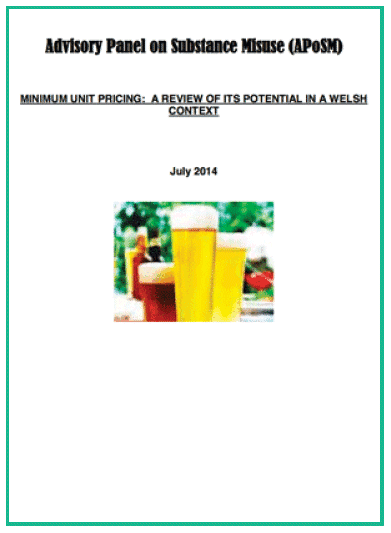
The Welsh Government should introduce minimum unit pricing to address alcohol-related harm among people most affected by hazardous and harmful levels of drinking, an independent expert panel has recommended.
In a report to Health Minister Mark Drakeford, the Welsh Government’s Advisory Panel on Substance Misuse (APoSM) concludes that the evidence shows that “the introduction of minimum unit pricing would target the most vulnerable groups in our communities and ameliorate the negative impacts of alcohol misuse.”
It says alcohol misuse accounted for more than 5,000 deaths in England and Wales in each of the last 10 years. Wales – which had 504 alcohol-related deaths in 2012 alone – has a higher rate of alcohol-related deaths than England.
On the basis of the available evidence, the members of APoSM unanimously recommend that the Welsh Government should introduce minimum unit pricing as a means of protecting vulnerable groups who are most affected by hazardous and harmful levels of drinking from alcohol-related harms.
Kyrie L James, Chair of the Advisory Panel on Substance Misuse, said:
“Alcohol health and social harm problems are preventable. Expert evidence and research confirms cheaper drinks are favoured by those who drink hazardously or harmfully, and a minimum unit price would have a disproportionate targeting effect on problematic drinking, reducing alcohol problems and achieving health and other benefits for individuals and our communities as a whole.
“APoSM’s view is that a minimum unit price is an effective mechanism through which alcohol-related harm can be addressed.”
Professor Drakeford said:
“In January, I asked the Advisory Panel on Substance Misuse to review the literature on minimum unit pricing, offer views on its relevance to Wales and to advise on what further work could be undertaken by the Welsh Government to supplement or strengthen the work on alcohol availability. I would like to thank its members for their work in developing this detailed report.
“Earlier this year, I set out a number of radical proposals for our forthcoming Public Health Bill, including the introduction of a minimum price for alcohol of 50p per unit.
“There is indisputable evidence that the price of alcohol matters. It is no coincidence that as the affordability of alcohol has improved substantially so has alcohol-related death and disease.
“A minimum unit price will make a strong contribution to preventing alcohol overuse and misuse and reducing alcohol-associated illnesses. The panel’s report supports this view.
“We will now develop our proposals further with a view to introducing the Public Health Bill in early 2015.”
Minimum unit pricing “would affect harmful drinkers 200 times more than low risk drinkers”
Government and alcohol industry attacked
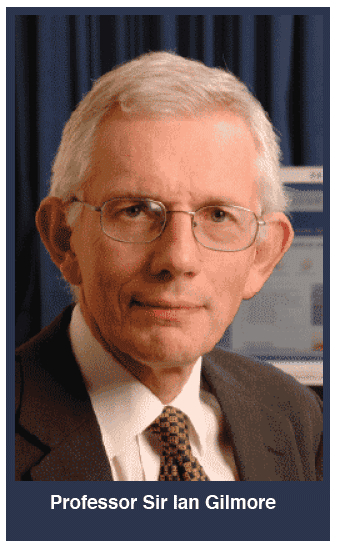
A new study of liver patients by the University of Southampton shows that a Minimum Unit Price (MUP) policy for alcohol ‘is exquisitely targeted towards the heaviest drinkers with cirrhosis’.
Published in Clinical Medicine, the peer review journal for the Royal College of Physicians, the researchers studied the amount and type of alcohol drunk by 404 liver patients, and also asked patients how much they paid for alcohol. They found that patients with alcohol-related cirrhosis were drinking, on average, the equivalent of four bottles of vodka each week, and were buying the cheapest booze they could find, paying around 33p per unit, irrespective of their income. In contrast, low risk moderate drinkers were paying on average £1.10 per unit.
On the basis of available research, the authors argue that if the Government set a MUP at 50p, it would not affect pubs or bars and would have no impact on moderate drinkers; the average cost would be £4 per year and 90% would not be affected at all. The impact on heavy drinking liver patients would be at least 200 times higher.
Professor Nick Sheron, from the University of Southampton, comments: “Setting a Minimum Unit Price for alcohol is an almost perfect alcohol policy because it targets cheap booze bought by very heavy drinkers and leaves moderate drinkers completely unaffected. Our research shows that an MUP set at 50p per unit would affect the liver patients killing themselves with cheap alcohol 200 times more than low risk drinkers.
“Alcohol sold to heavy drinkers provides three-quarters of the profits of the UK drinks industry, of which alcohol sold to very heavy drinkers provides one third. When the government says it is concerned about the impact of MUP on moderate drinkers, they are simply repeating propaganda, which has been put out by the drinks industry, to try and preserve the huge profits they are making from people drinking at really dangerous levels.
“The House of Commons Health Committee has stated in the past that they were concerned the policies were much closer to and influenced by the drinks industry and supermarkets than expert health professionals – and this is still the problem.
“Unless policy makers start listening to the evidence liver deaths will rise even further.”
Professor Ian Gilmore, the RCP special advisor on Alcohol and Chair of the Alcohol Health Alliance, said that the Westminster Government had “no credible excuse for its lamentable failure to take action on MUP.”
Allen Carr’s Easy Way method: Miracle cure or clever salesmanship?
Book review by Nick Heather PhD, Emeritus Professor of Alcohol & Other Drug Studies, Northumbria University
Being primarily an alcohol researcher, I was vaguely aware of the success of Allen Carr’s self-help book, The Easy Way to Stop Smoking, but had no detailed knowledge of his method or the evidence to support it. Now a parallel book on alcohol has appeared, The Easy Way to Control Alcohol, actually a reprint of a book first published in 2003. It makes intriguing reading for anyone seriously interested in helping people to recover from alcohol problems.
Are alcohol self-help books effective?
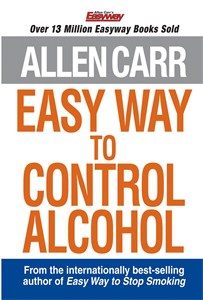 There is some evidence for the effectiveness of self-help books in the alcohol field. In the 1980s colleagues and I evaluated the effects of a self-help manual advertised in a popular newspaper in Scotland. Readers who responded to the advertisement were randomly sent either the self-help manual or a booklet giving general information about alcohol problems. Following people up six and 12 months later, we found small but significant benefits for the manual in terms of reduced alcohol consumption. More generally, in a review and meta-analysis of the effectiveness of ‘bibliotherapy’ for alcohol problems, two researchers in the USA concluded that the cost-effective use of self-help literature among problem drinkers was supported by research. However, the self-help books in question were based on scientific principles applying to cognitive-behavioural therapy and were explicitly aimed at a goal of moderate drinking for individuals wishing to reduce their consumption; those with dependence on alcohol for whom a goal of total abstinence was advisable were instructed to seek help elsewhere. All manuals of this kind contain clear statements at the beginning of the text that they are not suitable for ‘alcoholics’. For these reasons, the evidence favouring the use of self-help manuals is not applicable to the ‘Easy Way’ method, as we shall see.
There is some evidence for the effectiveness of self-help books in the alcohol field. In the 1980s colleagues and I evaluated the effects of a self-help manual advertised in a popular newspaper in Scotland. Readers who responded to the advertisement were randomly sent either the self-help manual or a booklet giving general information about alcohol problems. Following people up six and 12 months later, we found small but significant benefits for the manual in terms of reduced alcohol consumption. More generally, in a review and meta-analysis of the effectiveness of ‘bibliotherapy’ for alcohol problems, two researchers in the USA concluded that the cost-effective use of self-help literature among problem drinkers was supported by research. However, the self-help books in question were based on scientific principles applying to cognitive-behavioural therapy and were explicitly aimed at a goal of moderate drinking for individuals wishing to reduce their consumption; those with dependence on alcohol for whom a goal of total abstinence was advisable were instructed to seek help elsewhere. All manuals of this kind contain clear statements at the beginning of the text that they are not suitable for ‘alcoholics’. For these reasons, the evidence favouring the use of self-help manuals is not applicable to the ‘Easy Way’ method, as we shall see.
A remarkable life
Allen Carr’s life is a remarkable story. He was born into a working class family in London in 1934, began smoking at age 18, smoking (reputedly as a hundred-a-day chain smoker) until he finally quit in 1984. This happened following a visit to a hypnotherapist but Carr declined to credit this for his success at quitting. Rather, he put it down to his therapist telling him that smoking was merely nicotine addiction and to a medical handbook he read that described physical withdrawal from nicotine as ‘an empty, insecure feeling’. Armed with these two insights, he apparently experienced an overwhelming desire to explain to as many smokers as possible just how easy it was to quit using the method he then developed. He gave up his day job as an accountant, borrowed some money from a friend and wrote his first self-help book. Ironically, Carr died in 2006, aged 71, of lung cancer.
The Easy Way to Stop Smoking has been a best-seller every year since it was first published by Penguin in 1985. It has been translated into over 40 languages and has sold altogether over 10 million copies, easily the highest-selling book on giving up smoking ever published. In addition, there is a network of over 100 clinics in 35 countries employing counsellors trained in the Easy Way method, together with audio CDs, DVDs, seminars and various other multiplatform applications. The alcohol self-help book has not yet been as successful but is only one example of applications of the method to a range of other addictive disorders and life problems.
The Allen Carr method
The Carr method for bringing about behaviour change might be loosely described as a form of cognitive therapy but without the scientific foundations that form of therapy usually entails. What the alcohol self-help book attempts to do is alter the readers’ attitudes, beliefs and preconceptions about alcohol consumption, its effects and what it means to be dependent on it. Every chapter is devoted, in some way or another, to correcting what the author regards as fallacies about drinking and its attendant problems. This includes correcting the tenets of Alcohol Anonymous and similar teachings, particularly that there is no cure for the disease of alcoholism. On the contrary, says Carr, there is a cure and this book is it. (In a typical example of chutzpah the book is dedicated to the Fellowship – to show that, although AA members are wrong, they have his full respect.) In an appendix at the end of the book, there are six ‘Instructions’ that summarise the preceding text: 1) follow all the instructions; 2) don’t jump the gun; 3) start off in a happy frame of mind; 4) think positively; 5) don’t quit or cut down until the end of the book; 6) only read the book when you are sober; 7) keep an open mind. This is followed by another appendix that gives ‘The Instructions That Make It Easy To Quit’ – 16 more instructions containing the nitty-gritty of the method.
As for the style of the book, Allen Carr has been described as “a terrible writer“. I disagree. The writing is very well suited to its purpose. It is repetitive, colloquial, jokey and chummy – just the kind of style used by someone good at selling things to persuade customers to buy. There is no doubt in my mind that Allen Carr was a skilled communicator.
Why are Carr’s books so successful?
It is not difficult to guess why readers who have got into difficulties with their drinking might find The Easy Way to Control Alcohol attractive. The very claim that solving a drinking problem will be easy if the method is followed would be music to the ears of those who, with good reason, had imagined it would be painfully difficult. And as early as page 4 we learn that a cure will be immediate, permanent, will not require willpower, will involve no suffering of withdrawal symptoms or feeling of sacrifice or deprivation or the need to resist temptation. Miraculous is the only word to describe such a cure. It is clearly stated that, if a reader finishes the book, a self-help cure for a drinking problem is guaranteed (p.8). At the Easy Way clinics you get your money back if they fail to cure you. Unfortunately, for practical reasons, it is not possible to give readers their money back but a success rate of over 90% is claimed. The inference here is that, if you read the book and fail to benefit, then you obviously haven’t followed the instructions properly.
As might be expected, claims like this have put the Allen Carr organisation at odds with the medical and other health care professions. Although a few insights the book offers into the nature of alcohol dependence are interesting and might conceivably be justified by theory and research, there is no scientific foundation whatever for the method as a whole and no evidence in peer-reviewed scientific journals for its effectiveness. But surely, you might say, the very success of the Allen Carr enterprise means that its claims must be reliable. Why otherwise would prominent celebrities endorse the method? How otherwise could the organisation afford to give people their money back if the help offered at the clinics did not work? In view of all this evidence of success, how is it possible to question the Allen Carr method? An episode from the history of cures for alcoholism suggests that it is possible.
In 1880, Dr Leslie Keeley announced the discovery of a cure for intemperance, established an institute in his home town of Dwight, Illinois, and began receiving patients. Keeley’s cure consisted of ‘double chloride of gold’ which was said to be imbued with secret powers of relief for the drunkard when injected intravenously or taken orally. Double chloride of gold is a compound unknown to pharmacology. Nevertheless, owing mainly to favourable press coverage, the cure suddenly became enormously popular and problem drinkers flocked to a proliferating number of Keeley Institutes in the hope of a cure for their affliction. Thousands of former patients were turned into missionaries and were formed into leagues which held conventions where the wondrous properties of the cure were extolled by hired lecturers. There was even a grand exposition in Chicago in 1893 at which hundreds of Keeley graduates paraded in honour of their saviour. Keeley died a rich man in 1900 but enthusiasm for the cure did not long outlive its inventor. But before its demise, it is estimated that 400,000 people had taken the Keeley cure. Does any of this seem familiar and relevant to present concerns? It might be argued that we are now less credulous than our 19th century forebears but that is a matter for debate.
Miracle cure?
I do not wish to be misunderstood. I am not definitely stating that the Allen Carr method is a modern equivalent of Dr Keeley’s snake oil. It is conceivable – just – that the high success rates claimed would turn out to be justified if examined properly. One possibility is that the constant, almost hypnotic repetition in the Carr books that a cure is easy and guaranteed if instructions are followed acts as a kind of powerful self-fulfilling prophecy. One of the most mysterious and least understood aspects of human behaviour relates to the so-called placebo effect which describes the real improvement in a medical condition sometimes shown by patients who take pharmacologically inactive tablets or an otherwise ineffectual procedure, for example in the control group of a research trial, in the belief that they are or may be an effective treatment. The simple deduction from the huge amount of research done on this phenomenon is that something can be beneficial if one believes that it is. More generally, psychologists will tell you about the enormous power of expectancies on behaviour; what we do is not so much influenced by past consequences of our behaviour but by what we have been led to expect future consequences will be.
The fact is that I do not know whether the Carr method is a miracle cure or not. This is because there is no reputable scientific evidence bearing on the matter. Chapter 2 in Carr’s alcohol self-help book is entitled ‘Keep an open mind’ and this is also his last major instruction to hopeful readers. This is exactly what I am trying to do, for the simple reason that this is the hallmark of a rational approach to life in general and to purported claims to be able to ‘cure’ behavioural problems in particular. I will continue to keep an open mind about the Easy Way method until presented with robust empirical evidence one way or the other. Anyone who has read Ben Goldacre’s excellent book, Bad Science, will understand the need to subject the kind of claims made by Allen Carr to proper scientific scrutiny.
It seems extraordinary, given the popularity and influence of his self-help books and clinics, that there has never been an attempt, as far as I know, to evaluate the effectiveness of the method by means of a randomised controlled trial in the areas of alcohol dependence, nicotine addiction or anything else. There have been repeated calls on Carr and his colleagues to subject their method to a proper test of effectiveness but, as far as I am aware, such calls have gone unheeded. Imagine if a pharmaceutical company marketed a drug designed to help people stop smoking without having any acceptable evidence to show that it did any good; there would be uproar. In similar vein, it seems to me there should be much more pressure on the Allen Carr organisation, from official and unofficial sources, to co-operate with an independent, adequately-funded and properly-designed randomised controlled trial in which the effectiveness of the Easy Way method would be compared with a conventional and scientifically supported method of treatment. One lives in hope.
Minimum unit pricing ‘would affect harmful drinkers 200 times more than low risk drinkers
A new study of liver patients by the University of Southampton shows that a Minimum Unit Price (MUP) policy for alcohol ‘is exquisitely targeted towards the heaviest drinkers with cirrhosis’.
Published in Clinical Medicine, the peer review journal for the Royal College of Physicians, the researchers studied the amount and type of alcohol drunk by 404 liver patients, and also asked patients how much they paid for alcohol. They found that patients with alcohol-related cirrhosis were drinking, on average, the equivalent of four bottles of vodka each week, and were buying the cheapest booze they could find, paying around 33p per unit, irrespective of their income. In contrast, low risk moderate drinkers were paying on average £1.10 per unit.
On the basis of available research, the authors argue that if the Government set a MUP at 50p, it would not affect pubs or bars and would have no impact on moderate drinkers; the average cost would be £4 per year and 90% would not be affected at all. The impact on heavy drinking liver patients would be at least 200 times higher.
Professor Nick Sheron, from the University of Southampton, comments: “Setting a Minimum Unit Price for alcohol is an almost perfect alcohol policy because it targets cheap booze bought by very heavy drinkers and leaves moderate drinkers completely unaffected. Our research shows that an MUP set at 50p per unit would affect the liver patients killing themselves with cheap alcohol 200 times more than low risk drinkers.
“Alcohol sold to heavy drinkers provides three-quarters of the profits of the UK drinks industry, of which alcohol sold to very heavy drinkers provides one third. When the government says it is concerned about the impact of MUP on moderate drinkers, they are simply repeating propaganda, which has been put out by the drinks industry, to try and preserve the huge profits they are making from people drinking at really dangerous levels.
“The House of Commons Health Committee has stated in the past that they were concerned the policies were much closer to and influenced by the drinks industry and supermarkets than expert health professionals – and this is still the problem.
“Unless policy makers start listening to the evidence liver deaths will rise even further.”
Professor Ian Gilmore, the RCP special advisor on Alcohol and Chair of the Alcohol Health Alliance, said that the Westminster Government had “no credible excuse for its lamentable failure to take action on MUP.”
Alcohol going out of fashion among school-age children?
Data released by the Health & Social Care Information Centre (HSCIC) today confirms a continuing downward trend in underage drinking among schoolchildren
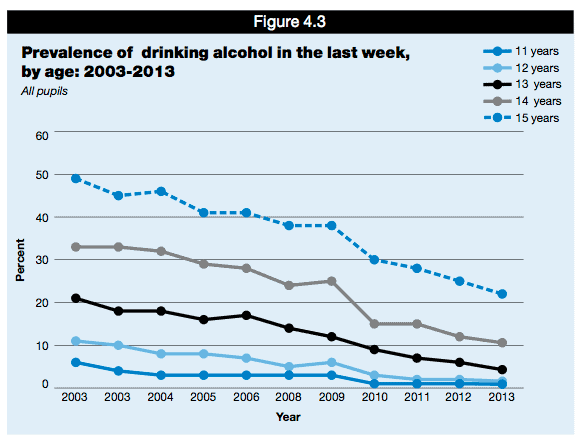
The long-term decline in the proportion of school children who report regular drinking is continuing. In 2013, 9% of pupils had drunk alcohol in the last week, less than half the level in 2003 when the figure was 25%.
The latest figures from the HSCIC also show that, as well as the growth in the number of school-children who do not drink, the average consumption of those who do drink is also going down.
Nor is it just alcohol which is declining in popularity. The figures show that smoking and illegal drug use have also declined substantially. Just 3% of pupils were regular smokers in 2013 compared with 9% in 2003. 6% of school pupils had used illegal drugs in the previous month, the same as in 2011 and 2012, but half the level in 2003 when the figure was 12%.
The Smoking, Drinking and Drug Use Among Young People in England 2013 report is based on survey results of over 5,000 pupils (5,187) in 174 schools in the autumn term of 2013.
The report provides an insight into attitudes and showed that illegal drug use was considered the least acceptable compared to smoking and drinking alcohol. One in four (26%) school pupils reported ‘it was OK for someone their age to drink alcohol once a week’, compared to one in eight (12%) for smoking cigarettes once a week and only one in twenty (5%) for taking cannabis once a week.
Cannabis was the drug with the highest acceptance rating.
The report also shows that in 2013 in England:
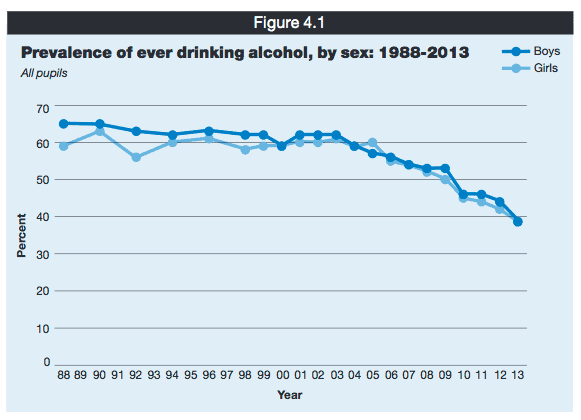
- Less than one quarter of pupils (22%) reported they had ever tried smoking at least once compared to four in ten (42%) ten years ago in 2003. This is the lowest level recorded since the survey began in 1982
- Around four in ten pupils (39%) reported that they had ever drunk alcohol compared to six in ten (61%) in 2003; boys and girls were equally likely to have drunk alcohol
- The median alcohol consumption of pupils who did drink was 5 units, down from 7.8 units in 2007
- One in six pupils (16%) reported having ever taken drugs compared to almost one in three (30%) in 2003
- Pupils who reported that they had ever truanted or been excluded were more likely to say that they usually took drugs at least once a month (10%) compared to those who had never truanted or been excluded (1%). In 2003 the levels were more than double this (21% and 3% respectively)
- Cannabis was the most commonly used drug among school pupils where 7% reported having taken this in the last year. This has consistently been the most common drug used over the last decade
- One in 50 (2%) pupils had reported all three behaviours; smoking and drinking in the last week and having used drugs in the last month, and this is similar to figures reported in previous year.
The full report can be accessed on the HSCIC website.
Row over rape poster
A row has broken out regarding a poster issued by the Home Office and the NHS warning that being under the influence of alcohol renders women vulnerable to rape.
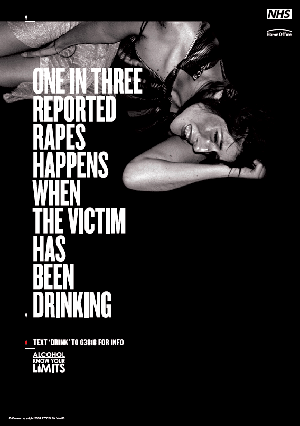
Critics, including the National Union of Students, claim the poster is an exercise in victim blaming, and a petition has been organised calling for it to be destroyed.
The poster pictures a distraught looking young woman accompanied by the words ‘One in three rapes happens when the victim has been drinking’.
The organisers of the petition complain that the poster is “a blatant and appalling case of victim blaming by our own Government, putting the onus on the victim rather than the perpetrator.”
Susuana Antubam, the Women’s Officer for the National Union of Students, issued a statement saying: “Whilst we support efforts from the NHS and the Home Office to tackle high levels of alcohol consumption, it is clear that this poster campaign completely fails in getting its message across and contributes to a culture that blames victims of rape for something that wasn’t their fault. 100% of rapes happen when someone decides to rape another person and the only way to stop rape is to stop rapists.”
The petition, reported to have gathered over eighteen thousand signatures, is addressed to Health Secretary, Jeremy Hunt, and Home Secretary, Theresa May, who have come under strong attack for the poster. The Daily Mail report of the story reproduced a number of outraged tweets, one from a young woman directly to Jeremy Hunt, saying: “this poster campaign is disgusting. How dare your government blame the victims?”.
However, the hostile reaction could be regarded as both belated and misdirected, as the poster actually appeared in 2006 as part of the Home Office’s ‘Know Your Limits’ campaign under the then Labour Government. The Know Your Limits campaign was discontinued with the change of Government, and it is not wholly clear why the criticism only emerged years after the event. However, it appears images of the poster remain archived on an old web domain, and, eight years on, copies of the poster may still be on display in some NHS premises.
One in three
While the poster has come under strong attack as an alleged case of victim blaming, no one appears to have challenged the accuracy of the sole claim it makes, that one in three reported victims of rape has been drinking. The poster does not indicate the source of this claim, but it lies well within conventional estimates of the involvement of alcohol in sexual offences. US research has found that around half of victims of sexual assault have raised blood alcohol levels at the time of the offence, the figures ranging from 30-79%. Broadly the same proportions are found in the perpetrators of the offences, and in many cases both perpetrator and victim have been drinking.
Clearly, the objection to the poster, and to any message of a similar kind, is not that the claim it makes is inaccurate but that it is irrelevant, as the drinking of the victim in no way excuses or mitigates the conduct of the offender. Presumably, those who produced and disseminated the poster would insist that there was no intention to imply that victims’ drinking did reduce the guilt of the offender, and that the idea was simply to warn of the dangers of young women placing themselves in especially vulnerable situations. Advice of that kind has not always been considered inherently controversial. In 2009 the Association of Chief Police Officers launched a rape awareness campaign, which coincided with the start of the Christmas party season, “which brings with it the potential for an increase in rape and sexual assaults as more people are out drinking large amounts of alcohol and leaving themselves vulnerable.” ACPO said that “Given excessive consumption of alcohol is a common feature of rape cases, the campaign aims to prevent people, in particular women falling victim by educating them on the simple steps that they can take to keep themselves safe on a night out.”
This campaign was supported by Rape Crisis (England and Wales) and The Survivors Trust.
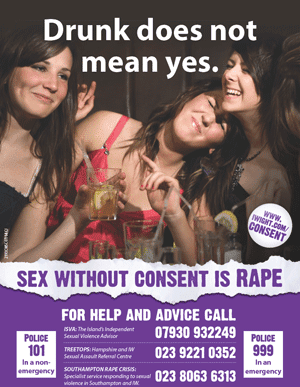
However, controversy is a pronounced feature of the issue of alcohol-fuelled rape in that it complicates the question of consent. In 2005 in a highly publicised case a man was acquitted of raping a woman so intoxicated as to be barely conscious and with whom he had sexual relations because, in the judge’s words, “drunken consent is still consent”. Subsequently, in order to avoid a repetition of this outcome, the Government of the day considered introducing a new law making it illegal to have sex with a woman who had reached a defined blood alcohol level at which she would be deemed incapable of giving consent. However, the new law did not come into being and the issue remains contentious. A current awareness campaign, taking place in the Isle of Wight, is designed to improve knowledge around consent and rape and to expose rape ‘myths’. One of the posters confronts the issue of drunkenness directly, and with a different and, many may think, preferable, emphasis to that of the Know Your Limits poster. The tag line is ‘Drunk does not mean yes’.
Speaking to Alcohol Alert, Fleur Gardiner, Co-ordinator of the campaign, explained:
“Our campaign seeks to challenge commonly held beliefs about rape, myths that allow victims to be criticised for sending out the ‘wrong message’, whilst excusing perpetrators for being ‘led on’. Alcohol is often involved in cases of rape, and is one of the most commonly cited factors when attempting to blame victims and excuse perpetrators. This makes it incredibly hard for victims to seek help – as they fear being judged or blamed. We know from research that a substantial proportion of people believe that a woman was fully or partially responsible for being raped if she was drunk. This has not been helped by well meaning, but dangerous messages from alcohol awareness campaigns that link rape to the victim’s alcohol intake and advise women to avoid drinking to keep safe. Messages like these are not helpful and ignore the fact that the vast majority of rapes are not committed by strangers but by people known to the victim – most often partners or friends. Rape myths have to be challenged if we are to see an increase in convictions for rape. This campaign aims to make it clear that the only person responsible for rape is the rapist.”
This insistence that alcohol intoxication is irrelevant to the question of moral and legal culpability could, however, be seen as raising an awkward issue for researchers and policy makers. If being drunk makes no difference to the innocence of the victim or, by extension, the guilt of the perpetrator, should alcohol continue being seen as a causal factor in rape cases?
Partnership working helps address alcohol-related crime and antisocial behaviour in York
Results from York Hospital study demonstrate benefits of data sharing
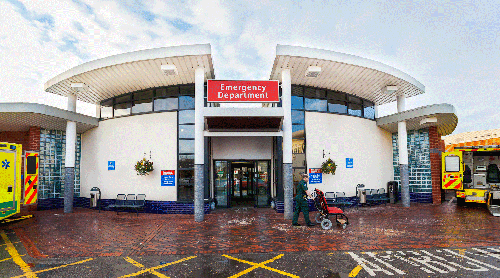
Partnership working through the Safer York Partnership’s (SYP) Alcohol, Violence and Night time Economy (AVANTE) task group has helped to reduce alcohol-related crime and antisocial behaviour in York, according to a York Hospital study The Influence of Alcohol on York Emergency Department.
In 2010, a Home Office Grant was awarded to the task group to support data collection within the hospital’s Emergency Department (ED), which was shared with Safer York Partnership to assist in providing more detail around the impact of alcohol on ED attendance.
Through this data sharing, the group has also been able to provide evidence to inform licensing decisions, increase Cumulative Impact Zones (CIZ) and increase Alcohol Restriction Zones (ARZ), which all help tackle crime and disorder or public nuisance in York.
The study has also supported targeted campaigns on personal safety and strong links with the universities in the light of evidence gathered during fresher’s week.
Although the Emergency Department in York Hospital sees a high number of patients who are under the influence of alcohol, there is no way of studying these patients to identify patterns or trends. Electronic recording is too crude and main diagnosis is coded by injury/illness rather than the causative influence.
In total 2,855 patients were studied over the study period. Alcohol-related attendance in York Hospital’s ED was 14.9% due to alcohol in 2013-14, which was down compared to the 2011 figure of 19.7%. The four weeks selected in 2011 were purely random, whereas the six week sample in 2013-14 reflected some of the highest drinking levels but still showed a reduction in attendance due to alcohol of 25%.
This data demonstrated that since data sharing between the ED and SYP began, the interventions that the additional study enabled have impacted significantly on ED attendance, therefore resulting in reduced cost to the NHS.
Dr Gillian Kelly, who carried out the study, said: “York has seen one of the best examples of a successful project which has an excellent data collection tool and proactive staff.”
Cllr Tracey Simpson-Laing, Cabinet Member for Homes and Safer Communities, added “The results of this study clearly demonstrate the success of intelligence-led multi-agency problem solving that has been delivered through Safer York Partnership. The information gives us a fascinating insight into types of patients who attend the Emergency Department (ED) overnight. The night-time economy is highly lucrative for the City of York and people come here as it is perceived as a safe, secure environment in which to have an enjoyable night out, but inevitably some take this too far.
“At no stage in the interviews provided by healthcare professionals or police in this study has anyone instructed the public to not drink alcohol, but the message has to be that in order to have a fun night out, this should not involve a trip to the ED. Healthcare should not be involved in a routine evening of fun, but all too often it is.
“For this reason, over the last few years, a series of measures have been put in place to attempt to reduce levels of excess alcohol consumption in the city. An Alcohol Restriction Zone (ARZ) has been put in place allowing the police to easily move people who are seen to be consuming alcohol in an irresponsible manner which is likely to lead to anti-social behaviour. More recently, this has been expanded, many of the trains to and from the North East have become ‘dry’ where no alcohol is taken on to the trains and on some occasions there is a night-bus parked where people can stop, rest and sober up a little prior to going home.”
Counselling has limited benefit for young problem drinkers
Counselling techniques used to help young people with drinking problems may be of limited benefit, a new study suggests

In a systematic review published in The Cochrane Library, researchers found that an approach known as motivational interviewing did not substantially reduce drinking or alter alcohol-related behaviour.
Globally, every year, around 320,000 young people between the ages of 15 and 29 die as a result of alcohol misuse. Most of these deaths are due to car accidents, murders, suicides or drowning. Motivational interviewing is a counselling technique developed in the 1980s that is sometimes offered to people with alcohol problems. It aims to help them overcome ambivalence and change behaviour. Counsellors listen, adopt a non-judgemental, non-confrontational stance and provide support to change by highlighting the negative consequences of drinking.
The researchers reviewed evidence from 66 trials involving a total of 17,901 young people aged 25 and under. Many of the studies recruited young people who were at high risk of alcohol-related problems. In 49 trials, those involved attended one individual session. In the others, they attended group sessions or a mixture of group and individual sessions. Four months later, participants who underwent counselling had only slightly reduced the amount they drank and how often they drank compared with people who were untreated. On average, participants who had counselling had about one and a half fewer drinks per week compared to those who had no counselling (12.2 drinks compared with 13.7). The effect of counselling on the number of drinking days was also very small: 2.57 days per week compared to 2.74 in untreated people). Participants also slightly reduced their maximum blood alcohol levels from 0.144% to 0.129%, but their average blood alcohol levels did not change. Motivational interviewing had no effect on alcohol-related problems, binge drinking, drink-driving and other risky behaviours related to alcohol.
“The results suggest that for young people who misuse alcohol there is no substantial, meaningful benefit of motivational interviewing,” said lead researcher David Foxcroft, who is based at the Faculty of Health and Life Sciences at Oxford Brookes University in Oxford, UK. “The effects we saw were probably too small to be of relevance to policy or practice.”
The young people involved in trials included university and college students, army recruits, prisoners and young people attending healthcare centres, youth centres and job centres. “There may be certain groups of young adults for whom motivational interviewing is more successful in preventing alcohol-related problems,” said Foxcroft. “But we need to see larger trials in these groups to be able to make any firm conclusions.”
Alcoholics Anonymous – Amanda’s story
“Alcoholics Anonymous is an international fellowship of men and women who have had a drinking problem. It is non-professional, self-supporting, multiracial, apolitical and available almost everywhere. There are no age or education requirements. Membership is open to anyone who wants to do something about his or her drinking problem.” (A.A. W.S. Inc.)
Volunteer Amanda is one of those members. She has been part of Alcoholics Anonymous and sober for 10 years. In this article, she shares her experiences of the organisation and explains how it helps people who have problems with alcohol misuse through recovery to achieve and maintain sobriety.
Amanda’s story
I first attended Alcoholics Anonymous (AA) on 10 May 2004 after 16 years of alcoholic drinking at the age of 34. I had started binge drinking in my late teens to make myself feel better and to give me the confidence to fit in with everyone around me, but as I reached my twenties I started drinking daily, consuming a bottle of wine every night.
Over the next few years, I joined a regional newspaper as a reporter and moved up through the ranks. But the regular sight of lots of empty wine bottles in my house made me question whether my drinking was becoming a problem.
However, when I moved to London to work for a Sunday newspaper, any fears I had about being an alcoholic vanished when I saw my colleagues drinking with contacts in the pub, getting their big scoops over a bottle of wine or two. “It’s not me, it’s the job,” I told myself. That delusion kept me out there drinking for much longer. But in reality, I was having to stop to buy alcohol on the way home too, because as soon as I had that first drink, it started a mental and physical craving which led me to continue drinking until I became unconscious.
Then I quit my newspaper job to start my own business as a publicist. Soon I was mixing with the rich and famous at red carpet events and glittering parties almost every night, but I had gotten to a point where I was drinking in the morning. I knew I was in trouble with alcohol; I had read articles on women in their thirties dying of alcoholism and I bought a medical book which told me how alcohol affected my body, but I carried on drinking regardless.
It was a business trip to Australia that led me on my journey to recovery. While I was there with a client for work, I hooked up with an old boyfriend, who was an alcoholic. I invited him back to England, but the experience of drinking with him made me realise how bad things had become. I had always been responsible, but I then started drink-driving. It was at that point that I felt I had crossed a line and my life was spiralling out of control.
When he left for Australia a few days later my mother sat me down and told me: “You are going to be dead soon if you don’t stop drinking and I’m not willing to watch this anymore. You need help, you need to call Alcoholics Anonymous.” That was something I’d not heard before; it was like a light had been switched on inside. That day I rang AA to ask for help.
What do AA members do?
AA members help each other to achieve and maintain sobriety both through regular meetings and by following a suggested 12-step recovery programme. The programme represents the experience of the first 100 members who got sober in 1935, as described in the AA Fellowship’s 1939 publication titled ‘Alcoholics Anonymous’. It is from this book that AA takes its name.
A volunteer, a recovering alcoholic, spoke to me and set up a call with a female member of the fellowship of AA, who arranged for me to attend an AA meeting.
Contact can be made by calling the helpline or sending an email, which are answered by AA members who themselves have had a severe problem with alcohol at an earlier stage in their lives.
I have been involved in service within AA since I first arrived and over the years have worked on the AA helpline, at Intergroup level and Region and this year became a Conference Delegate.
The main purpose of the AA Fellowship is to “carry the message of recovery”. This means that AA members take on “service commitments” as a way of maintaining their own sobriety through actions that help to reach fellow sufferers. This can range from making the tea every week at a meeting, to giving a presentation in a school or running an A.A. meeting in a prison.
I have also been involved in taking the message of recovery into treatment centres, schools and more recently helped host a reception in Parliament for MPs and professionals on the work of Alcoholics Anonymous. I do all this because one of the basics of recovery is that ‘you’ve got to give it away to keep it’. We all maintain our sobriety by passing it onto others.
As soon as I walked into my first meeting, I found hope. It wasn’t what I was expecting at all; it was full of happy recovering alcoholics who had found a new life and freedom from the obsession to drink simply by abstaining from that first drink, working the 12 steps of AA, doing service and going to meetings. I have been in AA and sober for 10 years now, and it never ceases to amaze me the power of the fellowship and the programme that continues to transform lives on a daily basis.
For those of us lucky enough to be living new lives today thanks to the Fellowship of Alcoholics Anonymous, this is something we are more than happy to do because we have found a new freedom and a new happiness in the rooms of AA.
Greater Manchester Combined Authority launches Alcohol Strategy
Report says alcohol costs Greater Manchester £1.2bn each year
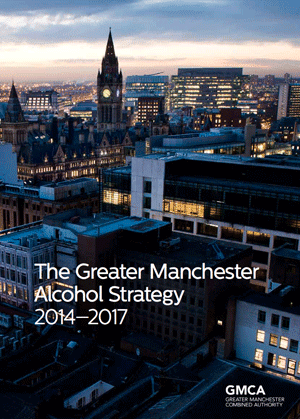 A report for the Greater Manchester Combined Authority says a region-wide alcohol strategy is needed to address the problems caused by alcohol. It will involve a commitment from all ten councils in the region, as well as the police and health services, to work together to tackle the causes and effects of alcohol abuse.
A report for the Greater Manchester Combined Authority says a region-wide alcohol strategy is needed to address the problems caused by alcohol. It will involve a commitment from all ten councils in the region, as well as the police and health services, to work together to tackle the causes and effects of alcohol abuse.
The report sets out a number of priorities of a united alcohol strategy, including:
- Promoting the effective and consistent use of licensing/regulatory tools and powers to reduce demand, including through enforcement-based activities and wider voluntary agreements with the alcohol trade
- Promoting consistent, appropriate and effective use of tools to address alcohol-related antisocial behaviour, including new measures within the Anti-Social Behaviour, Crime and Policing Act 2014
- Ensuring that Greater Manchester leads the way on best practice alcohol marketing
- Continuing to lobby government for national implementation of a minimum unit price.
The Strategy was put before local council leaders of the Association of Greater Manchester Authorities, and approved, at the end of August 2014. This will be the first time in the UK such a large number of public bodies have united to launch an alcohol strategy
The ten councils are Bolton, Bury, Manchester, Oldham, Rochdale, Salford, Stockport, Tameside, Trafford and Wigan.
Mike Connolly, Leader of Bury Council, said:
“The impact of alcohol abuse is everybody’s business. It impacts on the health and wellbeing of our residents, the safety of our communities and the future success of our town centres and their night-time economies. It’s essential we team up, roll up our sleeves to tackle this scourge on society together. It’s obviously not a problem just for Greater Manchester but the facts speak for themselves. Thirty eight per cent of violent incidents that result in an injury involve alcohol and one in three domestic incidents is alcohol related. Typically, people battling with alcohol die earlier, go to hospital more often and struggle to hold down regular work.
“Binge drinking also has a massive effect on our town centres, putting pressure on businesses and impacting on the safety of our residents. We must join forces to tackle this now.”
Assistant Chief Constable Garry Shewan of Greater Manchester Police said:
“Alcohol-related crime and disorder is a consistent challenge for the police and our partners in Greater Manchester…Greater Manchester has many areas which have a thriving nightlife but unfortunately long opening hours of pubs and clubs and the easy availability and cheap cost of buying alcohol from supermarkets has meant more people are getting excessively drunk and causing a nuisance and harm to themselves and others. This results in an increase in demands on the police, health services and local councils who are faced with managing both the risks to individuals and the damage that is caused to lives and our streets.”
Podcast
Our monthly podcast features interviews with experts from across the sector.
Gambling industry harms and parallels with the alcohol world
Will Prochaska –
Coalition to End Gambling Ads

